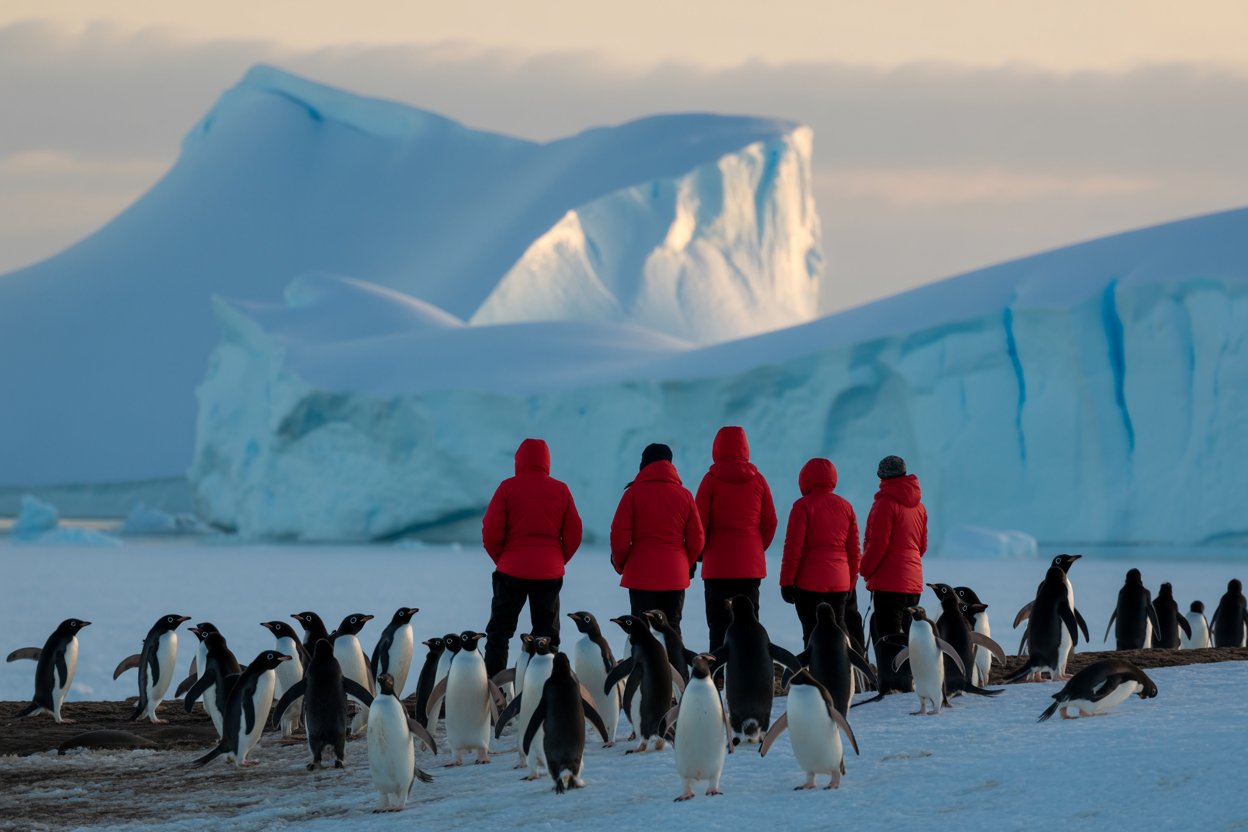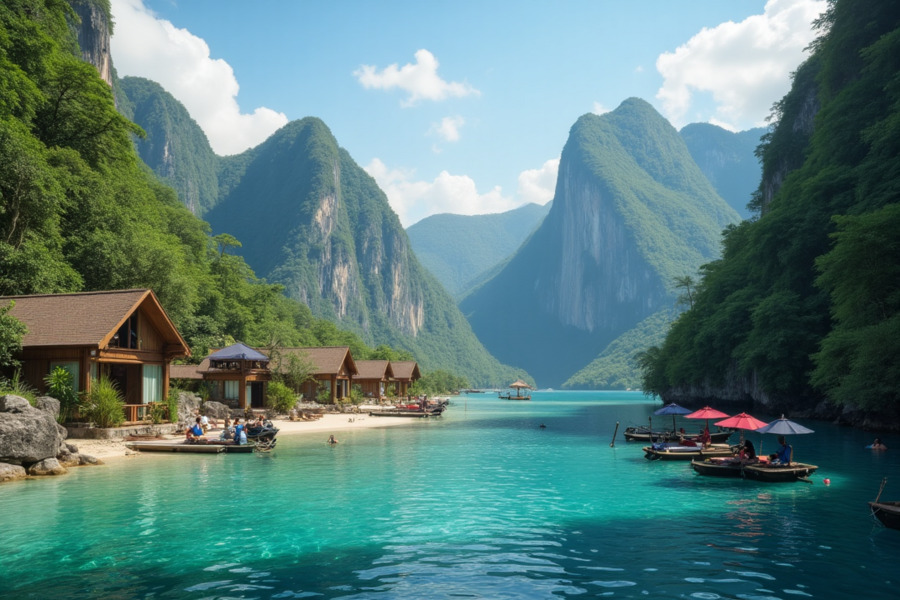≡-Antarctica’s Tourism Boom is Skyrocketing, but Getting There Comes at a Huge Cost – Here’s Everything You Need to Know – Viral of Today
<> Viral of Today <>
Home » TOURISM NEWS » Antarctica’s Tourism Boom is Skyrocketing, but Getting There Comes at a Huge Cost – Here’s Everything You Need to Know Published on
August 29, 2025Antarctic tourism has boomed in recent years, attracting over 100,000 international tourists annually. Travelers from distant countries like the United States, Europe, Asia, and Australia make their way to the South Pole to witness the continent’s unique ecosystems. However, getting to Antarctica involves considerable travel distances and lengthy journeys by sea and air.This article offers an in-depth analysis of Antarctic tourism emissions.What’s Going On?A study by researchers focusing on emissions from these trips reveals the hefty greenhouse gas emissions generated by flights and cruises. During the 2022–2023 tourist season, the total carbon output from these trips was a staggering 674,696 tonnes of CO2-equivalent emissions. On average, each traveler contributed 6.41 tonnes of CO2, including 2.26 tonnes for the flight and 4.15 tonnes for the cruise. To put this in perspective, an average European citizen produces the same amount of emissions in an entire year.Despite technological advancements that have made some travel more efficient, the rapid expansion of Antarctic tourism is outpacing these improvements, leading to higher emissions and a greater environmental footprint.Emissions from Different Travel OptionsThe carbon footprint of Antarctic tourism varies depending on the type of journey chosen. Travelers have several options, and each comes with different cruise emissions levels:Traditional Seaborne Voyages: These voyages, which typically last 12 days, depart from the southern tip of South America and include landings at various sites in Antarctica. These trips are among the most carbon-intensive, generating 4.6 tonnes of CO2 per person.Cruise-Only Journeys: These shorter, 11-day cruises do not include landings on the continent. These trips produce the lowest emissions at an average of 3.11 tonnes per traveler.Air-Cruise Operations: These tours replace the lengthy Drake Passage voyage with a flight to King George Island, followed by a cruise. These trips produce slightly more emissions, averaging 3.12 tonnes per traveler.Ross Sea and Antarctic Continent Voyages: The most emissions-heavy option, these trips last an average of 35 days and generate a significant 16.5 tonnes of CO2 per tourist.While these trips represent different levels of environmental impact, all forms of Antarctic travel contribute heavily to the global carbon footprint of tourism.Understanding the Full Scope of the Carbon FootprintDespite the high emissions associated with Antarctic tourism, it’s important to put these figures into context. Overall, Antarctic tourism only accounts for a small portion of global emissions from the cruise industry—less than 2%. While this may seem like a small fraction, the sheer volume of emissions from each trip remains concerning, especially when viewed through the lens of the ongoing climate crisis.The growing demand for trips to Antarctica highlights the increasing tension between tourism growth and environmental sustainability. The carbon footprint of these journeys remains a significant challenge for tour operators and environmentalists alike, raising the question of how to reconcile the allure of Antarctic travel with the need to protect the planet.Efforts to Reduce the Carbon Footprint of Antarctic TourismRecognizing the environmental impact of Antarctic tourism emissions, many organizations within the tourism industry are taking steps to reduce their carbon output. The International Association of Antarctica Tour Operators (IAATO) has long been a leader in promoting responsible tourism in Antarctica. The IAATO’s members have pledged to work toward achieving net-zero emissions by 2050.Several tour operators have also taken individual actions to lessen their environmental impact. For example, some companies have upgraded their vessels to reduce emissions, using cleaner fuels and more efficient technologies. One notable example is HX Expeditions, which operates hybrid-electric ships that reduce emissions by about 20%. These efforts reflect a growing trend among operators to make Antarctic tourism more sustainable, aligning with broader global goals for reducing greenhouse gas emissions.The Role of Tourists in Sustainability EffortsWhile tour operators are making strides toward tourism sustainability, tourists also play a crucial role in preserving Antarctica’s delicate environment. The growing popularity of the region has led to concerns that tourists’ enthusiasm for exploration may overshadow the need for environmental protection.The concept of tourists acting as ambassadors for Antarctica has been gaining traction. While some may view tourism as inherently harmful, the IAATO suggests that tourists have a responsibility to engage with the environment in a way that fosters conservation. This is not about justifying the environmental cost of travel but about encouraging visitors to become advocates for the region’s protection once they experience it firsthand.Many tourists are deeply moved by the beauty and fragility of Antarctica, and this connection often leads to a commitment to advocating for its preservation. However, this advocacy must go hand in hand with more sustainable travel practices and a genuine effort to reduce emissions from the tourism industry.Moving Forward: The Future of Antarctic TourismAs demand for Antarctic tourism continues to grow, the environmental challenges of Antarctic tourism emissions will become even more pressing. While technological advancements and individual efforts to reduce emissions are positive steps, they may not be enough to counterbalance the growing environmental impact of the industry.Governments and international organizations are beginning to take a more active role in regulating tourism to Antarctica. The Antarctic Treaty parties have agreed to develop a comprehensive framework that will guide the future of tourism in the region. This framework will aim to manage tourism growth, reduce emissions, and ensure that the unique environment of Antarctica is preserved for future generations.Conclusion: The Need for Sustainable Antarctic TourismIn conclusion, while Antarctic tourism continues to captivate travelers with its pristine landscapes and rare wildlife, the Antarctic tourism emissions linked to these trips are a serious environmental concern. With efforts from both tour operators and tourists to reduce the carbon footprint of these journeys, there is hope that the industry can evolve in a way that balances exploration with sustainability. However, the continued growth of tourism must be carefully managed to ensure that the future of Antarctic travel does not come at the expense of the region’s fragile environment.Key Points:The growing number of tourists to Antarctica significantly contributes to greenhouse gas emissions.The carbon footprint of each trip varies depending on the type of journey.Tour operators and the IAATO are committed to reducing emissions, with some companies aiming for carbon neutrality.Tourists play a crucial role in advocating for the protection of Antarctica’s environment.A global framework is being developed to regulate tourism and reduce its environmental impact.
This information will surprise you!
See also
- Read until the end to discover everything.
- Important information you need to know.
- Interesting facts and helpful tips.
Conclusion
Did you enjoy the news? Keep following us daily!













